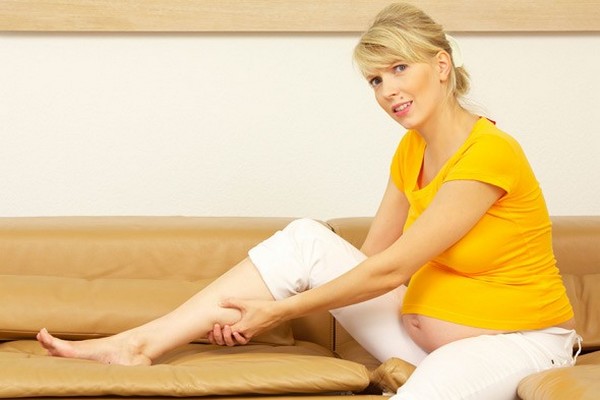Restless leg syndrome or RLS is a strange, creepy-crawly feeling that you might get in your legs, especially at night. You may find it hard to fall asleep and want to move your legs non-stop to alleviate that strange feeling. Unfortunately, restless leg syndrome gets worse during pregnancy. If you have never had restless leg syndrome, pregnancy might trigger it. Fortunately, there are many options that you can try to alleviate the sensation and help you sleep.
Restless Leg Syndrome Symptoms During Pregnancy
When you have restless leg syndrome, pregnancy can make all the sensations much worse. How do you know if you are just having a bad night, or if you really have RLS? There are a few tell-tale signs that will let you know you have this annoying condition:
- You might feel strange sensations in your legs, such as pulling, creeping, crawling, twinges, tingling and much more.
- An uncontrollable urge to move your legs; this gives you relief, but the moment you stop moving, the sensations begin again.
- Rest makes the situation worse, not better; when you are moving around, your legs feel better and you might not notice the strange sensations at all.
- The problem is much worse at night. For instance, you might take a nap during the day and be fine, but when you try to sleep at night, RLS acts up.
- You might have cramping and twitching of your legs during sleep. These involuntary movements are associated with periodic limb movement disorder, a condition that often shows up alongside restless leg syndrome.
What Causes Restless Leg Syndrome During Pregnancy?
 When it comes to restless leg syndrome, pregnancy can trigger it for the first time or make an existing case much worse. But why does pregnancy have such an effect? Scientists aren't exactly sure, but there are theories. The problem might be caused by a lack of a certain vitamin or mineral in the diet, or an imbalance of dopamine in the brain. When you are pregnant, the problem can be exacerbated by rising estrogen levels, low amounts of iron or folic acid in the body, or the circulatory changes that occur during those nine months. It is no coincidence that when the pregnancy is over, restless leg syndrome often goes away with it.
When it comes to restless leg syndrome, pregnancy can trigger it for the first time or make an existing case much worse. But why does pregnancy have such an effect? Scientists aren't exactly sure, but there are theories. The problem might be caused by a lack of a certain vitamin or mineral in the diet, or an imbalance of dopamine in the brain. When you are pregnant, the problem can be exacerbated by rising estrogen levels, low amounts of iron or folic acid in the body, or the circulatory changes that occur during those nine months. It is no coincidence that when the pregnancy is over, restless leg syndrome often goes away with it.
How to Deal With Restless Leg Syndrome During Pregnancy
When you have restless leg syndrome, pregnancy can make it bad enough to drive you out of bed in the middle of the night, making you irritable from lack of sleep. The good thing is that you might be able to pinpoint the things that make RLS worse, and perhaps alleviate at least some of the itchy, crawly feeling. Here are some suggestions that might help:
1. Mind the Medication You Take
Remember that many medications that might be suitable to battle RLS are not suitable for pregnancy or vice versa. For instance, although quinine is often helpful to treat restless leg syndrome, pregnancy may make that much complicated because its safety during pregnancy is yet to be proved. So never take this without your doctor's permission. Some medications, like some antihistamines, might be used to treat allergy and cold during pregnancy, but can actually make RLS worse.
2. Quit Caffeine
Even a single cup of coffee can make your restless leg syndrome much worse. Avoid caffeine entirely, even during the morning, and see if that helps.
3. Avoid Long-Time Stillness
The longer you stay in one position, the more likely you are to experience the symptoms. Try avoiding watching television or reading in bed, or doing similar activities that keep you very still for a long period of time. Go to bed only when you are ready to go to sleep.
4. Take Supplements
If you have restless leg syndrome during pregnancy, your doctor can check your iron levels. You might need supplements that help increase the amount of folate, magnesium, B12 or iron in your body.
5. Exercise Regularly and Properly
Regular exercise gets your blood pumping, and that can help alleviate the circulatory issues that might lead to restless leg syndrome. Pregnancy also needs proper exercises to improve your nad your baby's health. Try walking, doing squats, engaging in yoga and stretching or simply tensing and relaxing the muscles of your legs in a rhythmic fashion.
6. Try Other Measures to Soothe Your Condition
- A regular sleep routine can help you alleviate the symptoms, so try going to bed at the same time every night.
- Before you sleep, try a firm leg massage, or apply warm or cold compresses to legs to help relax.
- A warm bath before bed might also help get the blood pumping and help ease the problem enough to ensure a good night's sleep.
